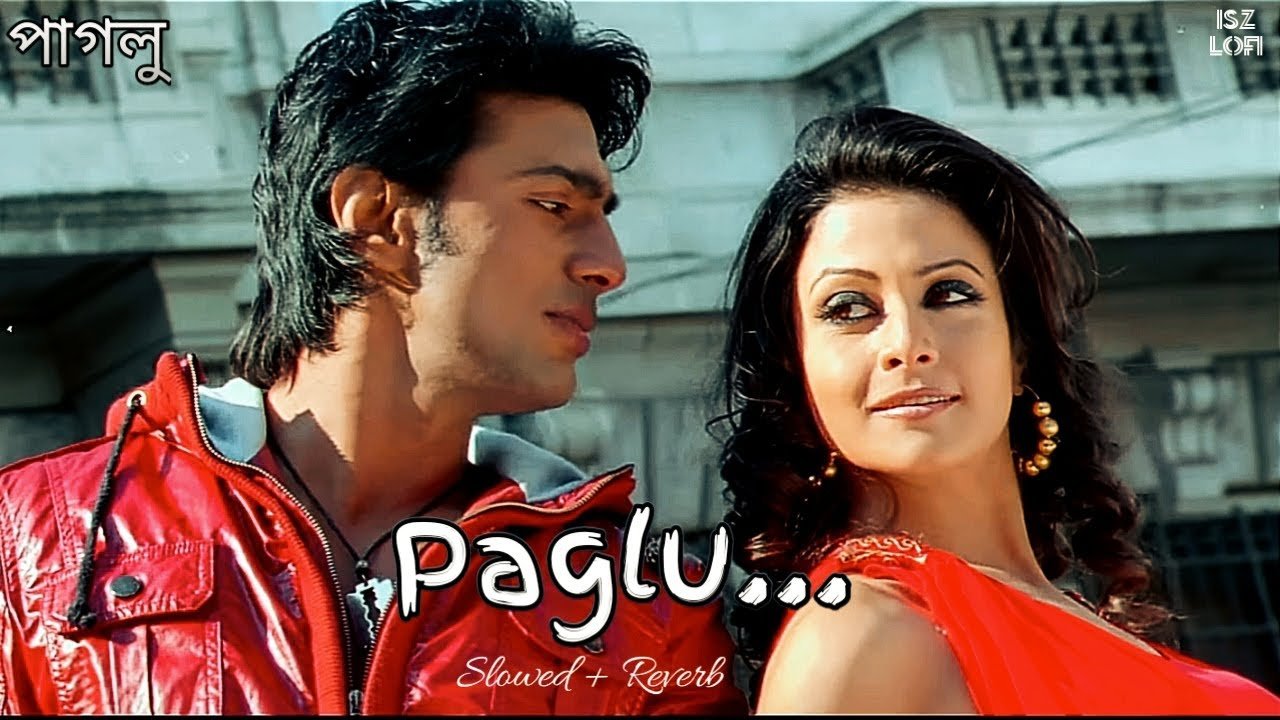Introduction
Words travel fast. A single short word can become a mood, a meme, or a movie title. In recent years one such word burst into feeds and conversations, drawing attention across age groups. This article explores that word — what it means, where it appears, and why people use it. I will offer clear definitions, examples you can try, and writing tips if you want to mention the word online. My tone is friendly and straightforward so even if you have never heard the term, you will finish this piece with a solid grasp and practical ideas for use in speech or social media. The word is paglu.
What does it mean?
At its core the word describes a playful kind of madness the kind of goofy, lovable energy people show when they are overly excited, obsessed, or swept up by romance. In different settings it can mean slightly different things: for lovers it might mean starry-eyed devotion, for fans it might mean intense obsession with a hobby, and for friends it can be a teasing label that says, “you’re being extra.” The tone is usually warm rather than cruel, but context and relationship always control how it lands. I will show examples later to make this clear. Many speakers simply say paglu with a smile.
Paglu on the big screen: the 2011 film
The word also reached many people via a hit Bengali film released in 2011. That movie used the title to capture the impulsive, dramatic spirit of its protagonist. It was a remake of the Telugu film Devadasu, and it performed strongly at the regional box office, becoming one of the more commercially successful local releases of its time. The film, directed by Rajiv Kumar Biswas and starring popular actors Dev and Koel Mallick, was a major financial success in its regional market. If you look up the film you will see reviews, music videos, and discussions about its influence on local pop culture.
Music, clips, and the ripple effect
Films and songs are powerful: even a short chorus can turn one line into a viral sound. The movie’s title track and related songs were reused in short clips and fan edits. Creators layered scenes from the film over trending audio and captions, making the word part of caption formulas and video punchlines. This use in music and short-form video helped the term move beyond its original neighbourhood and into global feeds where non-native speakers saw it and adopted it. Popular uploads and song uploads remain online for listeners and creators The musical push amplified paglu.
From nickname to meme: social media and slang
In its latest phase the word evolved into a meme-style tool. Social media users attached it to other words, made playful captions, and even created a suffix trend. That pattern turned the single word into a flexible tag that can be remixed for jokes or declarations of devotion. Observers of online culture note this change and trace the viral spread through short videos and trending posts. While some see it as a harmless fad, others criticize the repetitive use that can strip the term of nuance. The social form of paglu is short, snappy, and copyable.
Etymology and language play
To understand why the term feels so familiar, look at related words: roots like ‘pagal’ exist across several South Asian languages and mean ‘mad’ or ‘crazy.’ Small sound shifts, pet-name endings, and regional pronunciations soften sharp adjectives into lighter nicknames. This linguistic pattern makes the modern word feel both new and traditional: it is a playful twist on an older adjective, not a brand-new invention. Those subtle changes let speakers signal affection while keeping the original playful meaning in earshot. Language play like this is common in many speech communities.
Regional uses and diaspora adoption
Slang travels differently across regions. In Bengal the film gave visibility while in Hindi-speaking areas online creators spread a remix style. Across the diaspora, the word appears in mixed-language sentences a sign of cultural continuity and playful identity. People abroad often use such words to feel connected to home or to signal membership in a shared culture. Adapting a slang term this way makes it elastic and long-lasting, even if the exact shade of meaning changes. You may hear paglu mixed with English in chats overseas.
Practical examples you can try
Examples bridge theory and use. Try self-labels like, “I’m a chess-obsessed person today” or friendly jabs like, “Stop being dramatic and tell me the truth.” For hobbies, appending a fun tag after a noun works: “movie-fan” or “book-fan” signals a strong, playful interest. Use short phrases and keep the context light to avoid misunderstanding. When you start with self-deprecating lines, others are likelier to receive the term as teasing rather than attacking. Try a single, simple label like paglu once you know the tone. This gentle testing helps you see how friends react.
Tone and etiquette: when to avoid the word
Not every space is right for casual slang. Formal conversations, sensitive topics, and interactions with people you do not know well are poor places to use playful labels. Because the base meaning relates to ‘crazy,’ using the word around mental health conversations can be insensitive. Better to choose neutral language in professional or medical settings and reserve the slang for trusted friends and entertainment contexts where its warmth is clear to all participants. Use paglu sparingly and thoughtfully the same word can amuse or offend depending on who hears it.
Why the word spreads quickly online
Short words with strong emotional echoes travel fast in feeds. The word is phonetically catchy and fits well in brief captions, and that makes it ideal for platforms where attention is limited. Because it can be spun into many jokes or honest confessions, content creators find it easy to reuse. Once a few influential creators latch onto a term, fans imitate them — and the cycle continues. This organic replication explains how a regional nickname can become a broadly recognised trend in months rather than years.
Branding, creators, and local authenticity
Local slang can be powerful in marketing when used with care. Content creators sometimes title series or playlists with local words to signal authenticity and approachability. If you are a creator thinking of using regional slang in a brand name, test the vibe with a small audience first. Slang can create instant rapport with younger demographics but may confuse older or international viewers if left unexplained. A title that includes paglu can feel fun for a local crowd, but always check first for unintended readings.
Writing about it: SEO and helpful content
If you plan to write an article about the word, always prioritize people-first content over blunt SEO tricks. Define the word early, give examples, and explain cultural context. Use the keyword in the title and at natural points in the article, but avoid forceful repetition. Original commentary and firsthand examples raise trust and can improve search rankings more than keyword stuffing. Remember: clarity and usefulness win over search-engine manipulation every time. Keep paragraphs short, friendly, and useful for readers who want quick takeaways.
A brief note on sensitivity and mental health
Because the root idea links to ‘madness,’ be mindful of people who interpret such words through the lens of mental health. Slang that trivialises real struggle can be harmful. If your aim is humor, keep it kind and avoid mocking those who are vulnerable. A brief disclaimer in content that uses playful language for comedy can help set boundaries and show respect. When in doubt, prioritise empathy over cleverness.
Personal story and creative observation
I once watched a creator describe their first shy crush and caption the clip with a playful local word. The comment thread filled with empathetic jokes and shared memories from readers. That small exchange showed me how certain slang allows people to be dramatic without being harsh. In creative writing, words like these help convey emotional intensity without heavy language. If you use them in stories, pair the slang with clear signals — gestures, actions, or short explanations — so a wider audience can follow the tone. For me, hearing paglu in a story made it feel intimate.
Common mistakes and small corrections
A common habit is overusing trends until they become empty. If you overlabel every tiny enthusiasm people will stop noticing the nuance. Another mistake is using the term in contexts where it implies judgement or dismissal. When in doubt, rewrite the sentence for clarity, or use a supporting phrase that explains intent. Good edits often turn a potentially sharp sentence into a playful one by adding a short qualifier or an emoticon in casual chat. Editors who care about tone handle paglu carefully.
How language morphs: a short timeline
Language change is continuous. A nickname becomes a pop-culture label when media, music, and user creativity align. First local use, then media amplification, then viral remixing — that sequence describes many modern slang evolutions. Tracking those phases helps content creators and writers decide how to respond: you either ride the trend early with context or wait until the meaning stabilises and feels less fleeting. That is the arc that led paglu from speech to trend.
Using the word safely in creative work
If you want to write the word into a story or a caption, give readers enough context. A quick parenthetical note, an explanatory line, or a short example can keep meaning clear without interrupting flow. Consider your audience: if many readers are unfamiliar with the term, offer a single sentence definition near the start. That small investment increases accessibility and avoids misreads. Clear signals let your creative work be playful and inclusive.
Real-world examples and alternative phrasing
If the slang feels risky for your audience, choose alternatives that carry similar warmth: ‘silly in love’, ‘obsessed’, or ‘goofy fan’ might work. Pairing the term with descriptive verbs helps readers. For instance, “she grinned like someone hypnotised by a crush” gives the same feeling as a slang label without depending on a single cultural word. If you do use paglu, balance it with physical detail. That makes emotional expression vivid for people who don’t share the same slang background.
Tips for creators and marketers
When adopting local slang in campaigns, run small focus tests and create a fallback plan if feedback is negative. Track comments and listen for signs that your usage feels inauthentic or mocking. Also provide translations or short glosses in captions for mixed audiences. That small clarity increases reach while keeping local charm intact. Slang can become a brand asset when handled with humility and community input.
How to join the online trend responsibly
To join a tag-style trend, watch several creators first and copy formats that clearly signal playfulness. Use the term to describe yourself before applying it to others to show humility and reduce risk. Invite participation with prompts like, “What made you flip today? Share your short paglu moment,” but make sure to explain the term briefly in the first post so newcomers understand and feel welcome. That invitation keeps the trend open and friendly and avoids leaving new viewers confused.
FAQ 1 — What does it literally mean?
At a basic level the term usually describes a playful kind of ‘crazy’ or strong, often affectionate obsession. People use it to describe themselves when they are swept up by a hobby, a crush, or a sudden burst of emotion. The sense is light and teasing in most casual settings; it is not typically used as a harsh insult among friends. If you are writing for a broad audience, define the term early so readers who have not heard it can follow the tone. A short example sentence and a one-line explanation work well to make the meaning clear and inclusive.
FAQ 2 — Is the word rude?
Not inherently. In friendly relationships the word is often affectionate or teasing rather than mean. However, tone and audience matter. When used in professional settings, or when directed at someone you do not know well, the word can come across as dismissive or inappropriate. It’s also safer to avoid it in conversations about mental health where the term’s roots could unintentionally trivialise serious struggles. If you worry about tone, ask a close friend for feedback before posting publicly. Observing how different people react will help you refine use and keep relationships intact.
FAQ 3 — Is the film connected to the slang?
Yes. A 2011 Bengali-language film used the title and helped the word reach a wider audience beyond local speech. The movie featured well-known regional actors and enjoyed significant box office success, which made the title visible in songs, fan edits, and media chatter. As those clips circulated online, more people encountered the term and began experimenting with it in captions and short videos. If you are discussing the cultural history of the word, the film is a key reference point and worth mentioning when explaining how the term crossed into mainstream pop culture.
FAQ 4 — Can I brand or market with the term?
Yes, but cautiously. Slang can create authenticity and local warmth in marketing, especially for younger audiences. Before you use it in a product name, title, or campaign, do small tests with focus groups or trusted followers to see how the term lands. Provide a short gloss or translation in captions for mixed audiences so the message remains accessible. Include a brief explanation in marketing materials to avoid alienating older or international customers. This small clarification helps preserve brand clarity while keeping local flavor. Have a fallback in case the response suggests the term feels mocking or off-brand.
FAQ 5 — Where did the online suffix trend come from?
The suffix-style use where creators attach the term to nouns or phrases grew from short-form video creativity and caption culture. Creators experiment with new caption formulas because compact, catchy text works well on platforms with small screens and fast scrolling. Observers of digital culture trace this shift to re-used audio clips and rapid remixing of film and music snippets, which make certain words ideal for replication. If you study the trend, you’ll see early videos that attach the term to hobbies, emotions, and people, and then later waves where the formula becomes a meme.
FAQ 6 — Is it safe to use in mental health contexts?
Generally no. Because the root relates to ‘madness’, it is prudent to avoid the slang in conversations about mental health or treatment. Using such words around topics like diagnosis, therapy, or crisis can unintentionally diminish the gravity of a person’s experience. If you aim for humor in public content, include a clear signal that your jest is lighthearted and not meant to mock or belittle. When producing public content about sensitive topics, consider including a resources line with links or suggestions for help in the caption or description. That shows care and responsibility.
Conclusion and final advice
Trendy words can be joyful connectors when used with thoughtfulness. If you adopt this slang, do so with clear examples, an awareness of audience, and a mind toward inclusivity. Try the phrase in small, friendly settings before posting widely, and when you write about it online, explain its roots and give real examples. That combination of clarity and creativity keeps language playful and accessible to everyone. Thanks for reading and if you have a friendly example, share it so the conversation continues! Try saying paglu in a friendly sentence and watch how people respond.









